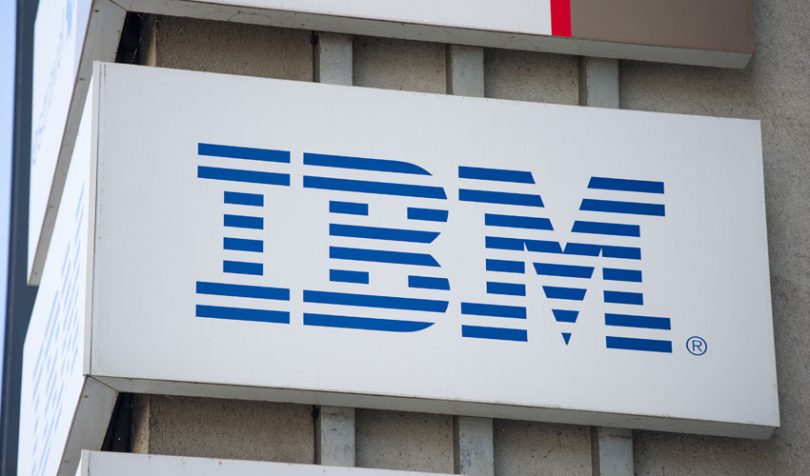Highlights
- IBM’s first live blockchain we.trade takes tech work in-house
- IBM cuts blockchain staff
- Head of IBM blockchain financial services departs abruptly
- Hyperledger’s success previously closely tied to IBM
- Hyperledger adds Microsoft, Salesforce, Ethereum Foundation, GS1, Nornickel
In the last couple of months, IBM has encountered several blockchain setbacks. It has laid off staff. Its head of financial services has left. And one of its highest-profile clients, trade finance blockchain we.trade is taking work in-house. To date, the fortunes of Hyperledger, the open source blockchain community that’s part of the Linux Foundation, has been perceived as tied to IBM. But just last week it announced a slew of high profile new members.
The IBM setbacks
Before delving into IBM’s misfortunes, they need to be viewed in context. Last year when Juniper Research asked respondents to rank enterprise blockchain technology and services providers, 65% ranked IBM first. Microsoft was second at 7%. That was an enviable position for IBM to be in, and one that wasn’t likely to be sustained to that degree.
Plus last month, IBM’s TradeLens project landed two of the world’s biggest container shipping companies who are competitors of co-founder Maersk. Many said that was impossible.
Compared to the size of its success, the recent setbacks are relatively small. And as markets mature so does competition.
As a sign of that maturity, we.trade, the trade finance blockchain, plans to take most of its development in-house. We.trade was the first IBM blockchain to go into production, albeit a soft launch. The trade finance company is owned by 13 major banks and is initially offering open account trade finance to European SMEs. Nordea has started to actively promote it to clients.
Two months ago we.trade announced that COO Roberto Mancone was departing and General Manager Ciaran McGowan was joining. McGowan has a background as a CTO and was hired to build a technical team in Dublin. In the last couple of months, various we.trade representatives confirmed to Ledger Insights that IBM’s role will be reduced. But it will continue to play a part with SaaS hosting and some professional services.
Layoffs and departures
The layoffs at IBM may be another sign of maturity and competition. Multiple sources have confirmed retrenchment on the consulting (not technology) side of blockchain. But the numbers quoted varied from the teens up to a hundred or so. IBM doesn’t talk about lay off figures, and this is part of broader ranging cuts that CNBC reported at roughly 1,700 employees.
IBM has stated that the cuts relate to repositioning to focus on high-value segments. But blockchain is one of those segments.
Another team loss was Jesse Lund, as CoinDesk first reported. Apart from being responsible for blockchain financial services, he was also in charge of IBM World Wire, the cross border payments system that leverages Stellar technology. In mid-May, Stellar encountered a technical problem that caused it to go down for two hours. News about Lund’s departure appeared less than two weeks later.
Technology
Stellar was the third blockchain technology that IBM associated with. First and foremost, IBM is identified with enterprise blockchain Hyperledger Fabric. The platform is used in most of its blockchain client engagements and in its two owned solutions, IBM Food Trust and TradeLens, which is a joint initiative with Maersk. Although Fabric has developed a significant open source community beyond IBM, Big Blue is one of Fabric’s main contributors.
Given Fabric’s success, the progress of Hyperledger as an organization has been perceived as tightly aligned with IBM. That’s compounded by IBM’s adoption of Hyperledger Indy, the identity software that underpins the Sovrin network.
Hyperledger and IBM
As demonstrated by adoption, Hyperledger’s most promising technologies after Fabric appear to be Indy (and its sibling Aries) and Hyperledger Sawtooth (and its sibling Grid). Two of those three are associated with IBM.
In December Hyperledger ran it’s Global Forum in Switzerland. One might expect that IBM had a major footprint. However, not only was there no keynote from IBM, but over two days there was only one IBM presentation, from its blockchain CTO Gari Singh.
The reason for IBM’s low-key presence is open to interpretation. One takeaway is that perhaps Hyperledger needs to try to unhook the perception of itself and its success as being closely tied to IBM. And as a good community participant, IBM complied. But IBM’s contribution to Hyperledger is undoubtedly recognized.
“Hyperledger Fabric would not have happened without their [IBM’s] involvement and continued investment, and thanks to that it is today the most widely supported and widely used enterprise blockchain framework,” Hyperledger’s Executive Director, Brian Behlendorf told Ledger Insights via email.
But he was keen to emphasize other member contributions. “Both Hyperledger and IBM are really happy to see other companies realizing value from Hyperledger Fabric, such as every major cloud provider who deploys it as a managed service, from big clouds like Microsoft to specialized clouds like Blockdaemon, who are both also members of Hyperledger and also contribute code into Fabric.”
IBM’s Singh noted that numerous startups contributed to Fabric, but expressed a little frustration that there weren’t more enterprise contributions than currently.
Hyperledger forges ahead
Back at Hyperledger’s Global Forum, there was a keynote from Intel, which is one of the main contributors to Hyperledger Sawtooth. Intel announced a new Sawtooth-based supply chain tools initiative Hyperledger Grid in collaboration with the world’s largest agribusiness, Cargill.
Both of these projects are showing significant promise. U.S. retailer Target says it’s working with Grid. And the highest profile adopter of Sawtooth is Salesforce which is basing its blockchain offering on the technology.
Salesforce was also one of a several high profile new Hyperledger members announced last week. The others include the China Academy of Information and Communications Technology (CAICT), the Ethereum Foundation, standards body GS1, Microsoft, and huge Russian metals company Nornickel, which is adopting Fabric. CAICT is the thinktank from China’s Ministry of Industry and IT.
While Hyperledger gradually cuts the umbilical cord to IBM, it’s not ignoring Big Blue’s contribution. Behlendorf acknowledged: “Their [IBM’s] commitment to Hyperledger has been unwavering.”







